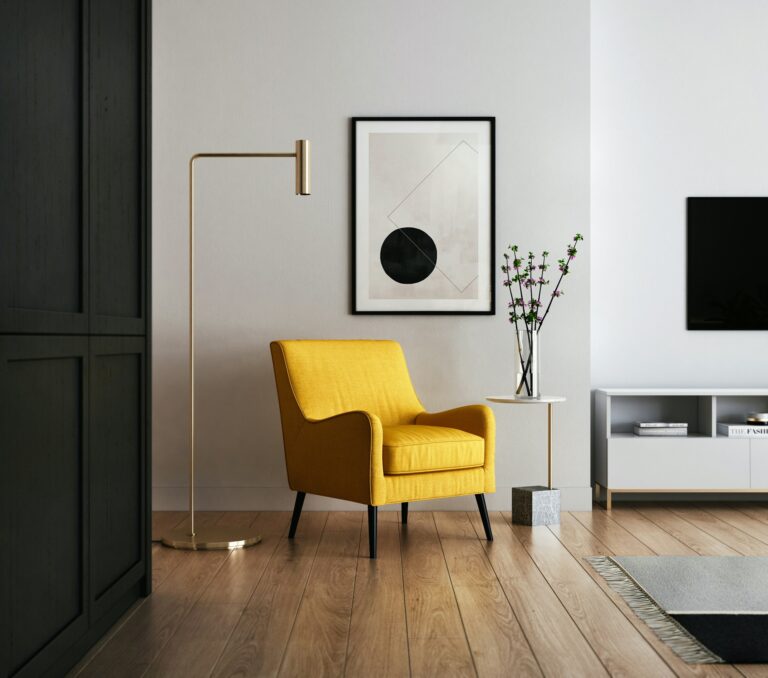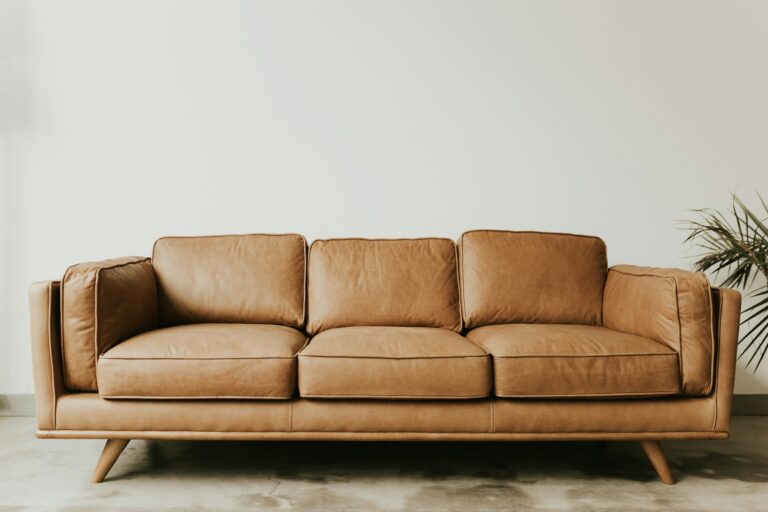Maximizing Small Spaces: How to Create a Functional and Stylish Living Room
In today’s modern world, living in a small space has become increasingly common. Whether you’re in an apartment, a studio, or a smaller home, you might find yourself facing the challenge of making your living room feel spacious, comfortable, and functional. The good news is that even the smallest living room can be transformed into a cozy, stylish, and highly functional space with the right design choices. The key is to use smart design techniques that maximize every square inch without overwhelming the room.
In this blog, we’ll explore how to turn a small living room into a haven that’s both practical and beautiful. We’ll focus on furniture choices, layout, color schemes, and clever design tricks to help you maximize your space and style.
1. Choose Multi-Functional Furniture
In a small living room, multi-functional furniture pieces are a lifesaver. Furniture that serves more than one purpose can save space while keeping the room stylish and organized. Here are some top recommendations:
- Sofa Beds: A sofa bed or futon is perfect for multi-purpose use. During the day, it serves as a comfortable seating area, and at night, it can double as a guest bed. This is especially useful for those who host overnight guests but don’t have a dedicated guest room.
- Storage Ottomans: Ottomans with built-in storage can be used as coffee tables, extra seating, or footrests while also providing hidden storage. Store blankets, pillows, remote controls, and other items to keep the living room organized. Look for ottomans with sleek designs that complement your space’s style.
- Modular Sofas: Modular sofas offer ultimate flexibility, as you can rearrange them to suit your needs. They often come with built-in storage or have the option to add additional pieces. This way, you can create a custom seating arrangement that fits your space perfectly.
- Compact Coffee Tables with Storage: Many small coffee tables now come with hidden compartments or additional shelving underneath, making them a great option for storing books, magazines, or other living room essentials.
Tip: When selecting multi-functional furniture, consider pieces that are lightweight and easy to move. This way, you can adapt your furniture arrangement as your needs change.
2. Embrace Vertical Space
When floor space is limited, it’s time to start thinking about how to use your vertical space effectively. By maximizing your walls and ceilings, you can add both storage and style to your small living room.
- Wall-Mounted Shelving: Install floating shelves or wall-mounted storage units to keep books, decorative objects, and personal items off the floor. This not only helps with organization but also draws the eye upward, creating the illusion of more space.
- Tall Storage Units: Opt for tall bookshelves, cabinets, or storage units that make use of the vertical space without taking up too much floor area. These can help keep the room neat and tidy, providing additional storage without compromising the open feel of the room.
- Hanging Decor: Add visual interest to your small living room by hanging artwork, decorative mirrors, or plants on the walls. This helps keep the floor area open and makes the space feel less cramped.
- Vertical Planters: Add greenery to your space without taking up floor space by using vertical planters or hanging plants. This adds a touch of nature while saving valuable floor space.
Tip: Be strategic with your wall decorations. Large, heavy pieces can make a small room feel more crowded. Instead, opt for minimalist art or wall-mounted lighting that adds personality without overwhelming the space.
3. Opt for Light Colors and Reflective Surfaces
Color plays a crucial role in how a space feels. In a small living room, lighter tones can make the space feel brighter, larger, and more open. Here’s how to use color and reflective surfaces to your advantage:
- Light Paint Colors: Light, neutral colors such as white, soft gray, beige, or pastel tones make a room feel open and airy. These shades reflect light, helping to brighten the space and create a sense of openness. For a more vibrant look, try light blues or muted greens, which can bring a fresh, serene feel to your living room.
- Reflective Surfaces: Incorporate reflective surfaces like mirrors, glass tables, and lacquered furniture to bounce light around the room. Mirrors are especially helpful in small rooms, as they create the illusion of space and enhance the brightness.
- Sheer Curtains: Instead of heavy drapes, choose sheer curtains that allow natural light to flow into the room. Sheer fabrics give a soft, airy feel and let sunlight illuminate the space. They also keep the room feeling open and inviting.
Tip: Avoid dark, heavy colors that absorb light and can make a room feel smaller and more closed off. Light and reflective surfaces help create a sense of openness, even in the smallest spaces.
4. Keep Furniture Proportional to the Room Size
In a small living room, the key to maintaining a spacious feel is to carefully choose furniture that fits the room’s proportions. Large, bulky pieces of furniture can overwhelm the space and make it feel cramped. Here’s how to keep everything in scale:
- Compact Sofas and Chairs: Choose a sofa and chairs that are proportionate to your living room’s size. Look for slim-profile sofas or armchairs that don’t take up too much space. A smaller sectional or a loveseat may be a better fit for a small room than a full-size couch.
- Avoid Oversized Furniture: While large furniture pieces can seem appealing, oversized sofas, coffee tables, or entertainment units can quickly crowd a small space. Instead, opt for more compact, streamlined furniture that doesn’t dominate the room.
- Floating Furniture: Try not to place all your furniture against the walls. Instead, float your furniture—i.e., arrange your sofa or chairs away from the walls, leaving space on all sides. This helps the room feel more open and creates a more relaxed, inviting layout.
Tip: Always measure your furniture before purchasing to ensure it fits comfortably within your space. Be mindful of how much floor space is left for movement.
5. Create Defined Zones within the Room
Even in a small living room, it’s important to establish distinct zones for different activities. This creates an organized and cohesive feel and ensures that every square inch of the room is utilized effectively.
- Seating Area: Arrange your seating so that it encourages conversation. Place the sofa and chairs around a central point, such as a coffee table or a TV. This arrangement works well for both relaxing and entertaining.
- Reading Nook: If you enjoy reading or relaxing with a cup of tea, create a cozy reading nook in the corner with a comfy armchair, a small side table, and a floor lamp. This defines a space within the room that’s dedicated to relaxation.
- Work/Study Area: If you use your living room for work or study, set up a small desk or work corner. Look for multi-functional furniture that can serve as both a desk and storage area. This helps to keep the workspace separate from the seating area, improving focus and minimizing distractions.
Tip: Use rugs, furniture arrangement, or subtle design elements to create clear boundaries between each zone. This makes the space feel more organized and functional.
6. Use Vertical and Horizontal Lines to Your Advantage
Design elements like lines can help visually expand or contract a space. Using vertical and horizontal lines in your design can create a sense of movement, height, or width, depending on the effect you’re after.
- Vertical Lines: Use tall, narrow furniture or wall-mounted shelves to draw the eye upward, creating the illusion of height. This can make your ceiling appear taller and the room feel more spacious.
- Horizontal Lines: On the other hand, horizontal lines can help make a room appear wider. Consider a horizontal-striped rug or a low-profile sofa with a wide seating area to emphasize the room’s length and create a more open feel.
Tip: Play with the direction of lines in your design to complement the shape of your room. In a narrow room, vertical lines can add height, while horizontal lines can widen a cramped space.
Final Thoughts
Designing a small living room doesn’t mean you have to sacrifice style or functionality. By making thoughtful choices—whether it’s selecting multi-functional furniture, using vertical space, or incorporating light colors and reflective surfaces—you can create a space that feels open, inviting, and well-organized. With these tips, even the tiniest living room can become a cozy retreat that’s both beautiful and practical. It’s all about maximizing every square inch and creating an environment that feels expansive, no matter the size of your space.



